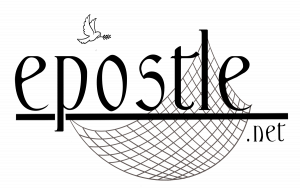Epilogue for Muiron Dive
Armodoxy for Today: Epilogue for Muiron Dive
Over the past month I have had the pleasure of sharing with you the background “deep dive” story of the Holy Muiron. This past weekend, thousands of people made the pilgrimage to Holy Etchmiadzin, Armenia to witness the blessing and the re-consecration of the Mother Cathedral which has been under renovation construction for over a decade. Thousands more watched on-line, as this seventeen-hundred-year-old tradition took place at the oldest Christian cathedral on Earth, in the shadow of Mount Ararat, where Noah and his family walked off the ark.
His Holiness Karekin II, the Catholicos of All Armenians presided and delivered a most stirring sermon which captured the essence of the Muiron of 2024 in the context of the world today. By way of an epilogue to this deep dive series, I share with you excerpts from His Holiness’ message, September 28, 2024. (The message in its entirety appears below.)
“Whoever is anointed with this shall revere God and fear not the enemy.”
Beloved Faithful,
On the eve of the Feast of the Holy Cross of Varag and the commemoration of St. George the Martyr, we give glory to Almighty God, who has granted us the grace to conduct the Blessing of the Holy Myron, a ceremony that we were unable to conduct earlier due to the calamitous events of recent years. By the merciful will of God, may the newly blessed Holy Myron bestow heavenly blessings upon our lives, granting spiritual strength and the grace of renewal to our people who have endured the ravages and losses of war.
Dear Ones, the blessing of the Holy Myron, reminds us of the sacred days of the conversion of the Armenian nation. Through the hand of Catholicos St. Gregory the Illuminator, under the majestic gaze of Biblical Mount Ararat, our people were baptized and anointed with the holy oil, blessed by our Lord and brought to Armenia by St. Thaddeus the Apostle. Thus were our people united with Christ and His Holy Church. The Armenian nation received the grace to become God’s own people and the first nation to declare Christianity as its state religion. Since that epochal moment when the nation’s faith was founded, the holy mountain of salvation, Ararat, and the Mother Cathedral of Holy Etchmiadzin have stood as sacred and indelible symbols of our enduring faith, and of the eternal existence of the Armenian people.
“Whoever is anointed with this Myron shall revere God and fear not the enemy.” Today, these stirring words from the prayer for the blessing of the Holy Myron echo resoundingly for all of us to hear. This message from our forefathers has accompanied our people throughout history, strengthening them to live with reverence for God’s love, emboldening them in the face of their enemies, and encouraging them to be defender of sacred values and our identity, and to be devoted to serving the homeland.
The Holy Myron is the visible sign of the presence of the Holy Spirit. Through the seal of the Holy Myron, a fountain of divine blessings pours out into the life of the individual and the nation. The one anointed with Holy Myron becomes the recipient of heavenly, pristine gifts, renewed to think and act in goodness, and to live in the fear of God, without fear in the presence of evil. The seal of the Holy Myron affirms our union with Christ and our membership in His Holy Church. It also confirms our national identity and the pledge of our fidelity to God.
For centuries, the Holy Myron has bound together the sons and daughters of our people scattered across the world, uniting the homeland and the diaspora. Through the Holy Myron, we are one nation and one Church. Today, the Holy Myron, distributed through the heads of the Hierarchical Sees and Diocesan Primates to our people worldwide, once again spiritually fortifies our indivisible unity. The Myron has become the blood that flows through the veins of Armenians, empowering the nation with spiritual strength to face all trials, as well as our current challenges, according to the prayerful exhortation of our forefathers: “The one anointed with the Myron fears only God and is unafraid of enemies.”
Beloved, the world today is once again troubled by conflicts and hostilities that undermine harmony in family life, human relationship, sowing enmity and intolerance, inciting war, spreading destruction and calamity. Our country and people, too, confront severe security threats, with an imperative to rise from devastation and profound losses. We believe that the world is not indifferent to pain and violence. We believe love and compassion have not evaporated from human hearts, nor have the pursuit of justice or the rule of law.
On this sacred occasion of the blessing of the Holy Myron, we once again appeal to the international community and our sister Churches, in the presence of our prayerful ecclesiastical and diplomatic representatives, to take effective measures to curb the expansionist ambitions of Azerbaijan and its incessant demands postured from a position of power, and also to return the occupied border territories of Armenia, the protection of the violated rights of the displaced people of Artsakh, the release of captured Armenians, and the preservation of the Armenian spiritual and cultural heritage of Artsakh from usurpation and destruction.
Beloved Faithful, the primary duty and responsibility for resolving this complex situation is ours. It is incumbent upon us to unite; to protect our country from new intrusions and losses; to dispel fear and concern for the future; to reassess mistaken and detrimental trajectories for the nation; to further strengthen Armenian-Diasporan relations; to promote healthy dialogue in the internal political life of the nation; and to seek ways to restore a safe and secure life for our people in the homeland. We must walk this path with justice, courage and honesty. Under these circumstances, trust and hope in God are an anchor and solid foundation upon which we can rise from the calamities that have befallen us in order to build a strong homeland.
Therefore, beloved, let this new Holy Myron be a Myron of hope and renewal, a radiant testimony to our resolve to revive our national life, and to our steadfastness in overcoming both internal and external challenges, as we shape a prosperous future.
Our pontifical appeal to our sons and daughters worldwide is to allow the course of our lives to be ever sealed with Holy Myron and to remain steadfast in protecting the interests of our state. Let no one endanger the future of our nation.
For no one who is anointed with the Holy Myron can ever renounce the dreams of his forefathers for an independent homeland, nor deny his own history.
No one who is anointed with Holy Myron may reject the heritage of his ancestors, nor diminish his sanctified values, nor distort his national identity and aspirations.
No one who is anointed with Holy Myron must ever insult or disdain his compatriots, his fellow sisters and brothers, as it is said, “He who does not love his brother whom he has seen, cannot love God whom he has not seen” (1 John 4:20).
Anyone who is anointed with the Holy Myron is called to become a pioneer of truth, a creator of goodness, and a preacher of love.
And finally, whoever is anointed with the Holy Myron should fear only God and be fearless in the face of enemies and threats, for, as the Holy Apostle says, “The weakness of God is stronger than men” (1 Corinthians 1:25).
Our Patriarchal exhortation to you, beloved Armenians of Artsakh, is to remain steadfast and unwavering in the face of tribulations and hardships. The atrocity committed against Artsakh was not solely against you, but against our entire nation. As a nation, we must resolutely uphold and advocate for your right to live freely and with dignity in your ancestral homeland. From this holy altar, we extend our love and blessing to you, praying that the heavenly graces be poured upon your lives and your households. As the Catholicos of All Armenians, we believe in the inner strength of our nation and the resurgence of our people, in the bright and victorious future that lies ahead.
On this occasion of spiritual renewal, the Blessing of the Holy Myron, we express our love and best wishes to the participants of the ceremony: clergy, state officials, political and diplomatic figures, dedicated national benefactors of the Mother See of Holy Etchmiadzin, and faithful pilgrims. We express our high appreciation to the national benefactor, Mr. Samvel Karapetyan, who has taken up the role of godfather for the Blessing of the Holy Myron and has made significant contributions toward the prosperity of our nation and homeland, as well as to the enlightenment of the Mother See of Holy Etchmiadzin. May God’s abundant blessings and heavenly gifts bring renewed success, our dear benefactor, Mr. Katrapetyan, to you and your pious family.
We pray to our Heavenly Father, that through the grace of the Holy Spirit, the works of faith, love, and goodness may flourish abundantly in the world, and the paths of peace and harmony may be strengthened. May our homeland be safe and steadfast through the constant outpouring of the Holy Spirit’s gifts, our people’s life adorned with virtue, and our Holy Apostolic Church remain bright and unshaken. May the life-giving light of the Holy Myron keep the Lantern of the Illuminator ever shining in the Armenian land, today, always, and unto the ages of ages. Amen.
Source: https://www.armenianchurch.org/en/news/28-09-2024-eng/11682


